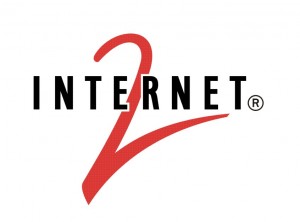 Internet2 is refocusing on providing a high-capacity network for pushing the boundaries of science and technology, which could help to foster the next hot Internet application, an executive said at the organization’s summer meeting.
Internet2 is refocusing on providing a high-capacity network for pushing the boundaries of science and technology, which could help to foster the next hot Internet application, an executive said at the organization’s summer meeting.
The network was launched in 1996 as a supercharged infrastructure for collaboration among academic and government researchers, but in the last decade its focus shifted toward lowering the cost of connecting its member institutions, said Eric Boyd, Internet2’s deputy technology officer for network services. The organization is now returning to its roots through a three-pronged initiative, with the help of about US$100 million in recent funding. It is holding a joint conference with the Energy Sciences Network (ESnet), another research network operator, at Stanford University this week.
For sheer horsepower, Internet2 is deploying a 100Gbps (bit-per-second) optical backbone for connecting regional networks at higher speed, which is nearly finished. It’s also starting to work with cutting-edge software-defined networking (SDN) technology to create a testbed for experimentation in networking itself, and looking at ways to carve out specialized virtual networks for science from within universities, Boyd said.
Universities were pioneers on the original Internet, which for many years primarily linked research institutions and government agencies. But today, all university students use the Internet and campus networks are designed largely for the same online activities everyday consumers use, such as Web browsing, social networking and mobile apps, Boyd said.
That makes Internet2 crucial once again, as a platform for exploring the applications of the future, he said. Just as Facebook, the Web browser, and other familiar killer apps were conceived on powerful, advanced academic networks, the next big Internet application could come out of a university, he said.
“If you try to measure the impact of academia’s effects on the U.S. and world economy, it happens to a greater degree when there’s an environment where they can do radical stuff, and some of it sticks to the wall,” Boyd said.
Exploring those new frontiers requires speed, dedicated resources and isolation between daily applications and experiments, Boyd said. “The reason we exist is because we’re doing things different from what the commodity service providers are doing.”
SDN, including the emerging OpenFlow standard, will be a key underlying technology to power both scientific and network advances, according to Boyd. SDN separates the control of networks from the equipment that moves that traffic around. Internet2 devoted a day at its meeting to a discussion of the emerging technology, which Internet2 participants and other presenters said could open up many more possibilities for changing what networks can do. It lets engineers program networks in an open-ended way rather than just configuring dedicated network devices, they said.
Internet2 is building SDN capability into its 100Gbps network. That could help to make it a testbed for new types of networks while also providing for new types of services that Internet2 can offer its member institutions, according to Boyd.
An early use of SDN that Internet2 is developing as a service for its customers is the ability to set up virtual LANs across multiple network segments, Boyd said. This makes higher performance possible over long distances such as across an ocean and two continents, he said.
One emerging tool that SDN helped make possible is FlowVisor, a platform developed by graduate students at Stanford to create “slices” of a network for one particular application or use of the infrastructure. Internet2 and partners, including Indiana University, hope to make FlowVisor more ready for use in production networks by next year, Boyd said. Beyond that, it might form the basis of a service offered over Internet2, he said.
With FlowVisor, researchers exploring totally new ways of using networks could run experimental software in one “slice” of a network while preventing it from taking over the resources that other users on the network need. Researcher Luke Fowler of the University of Indiana demonstrated this capability at the conference, applying controls on the slices of a network that prevented a resource-hungry experimental application called “Nutty Professor” from overloading the network’s control system.
Internet2 also hopes to foster the concept of a so-called “science DMZ,” which can set scientific applications apart from the rest of the traffic on university networks. Scientists have different needs from casual Internet users, Boyd said: high bandwidth, long sessions and dedicated connections over long distances.
At the same time, science applications don’t necessarily require some of the tools needed for average consumer traffic. For example, because the scientists are trusted users, they may not need to go through a firewall. With a special virtual path across the network, data-intensive scientific uses such as exchanging data on the Higgs boson atomic particle can get the performance needed while running over the same physical network as average students’ traffic, said Inder Monga, a researcher at ESnet.





